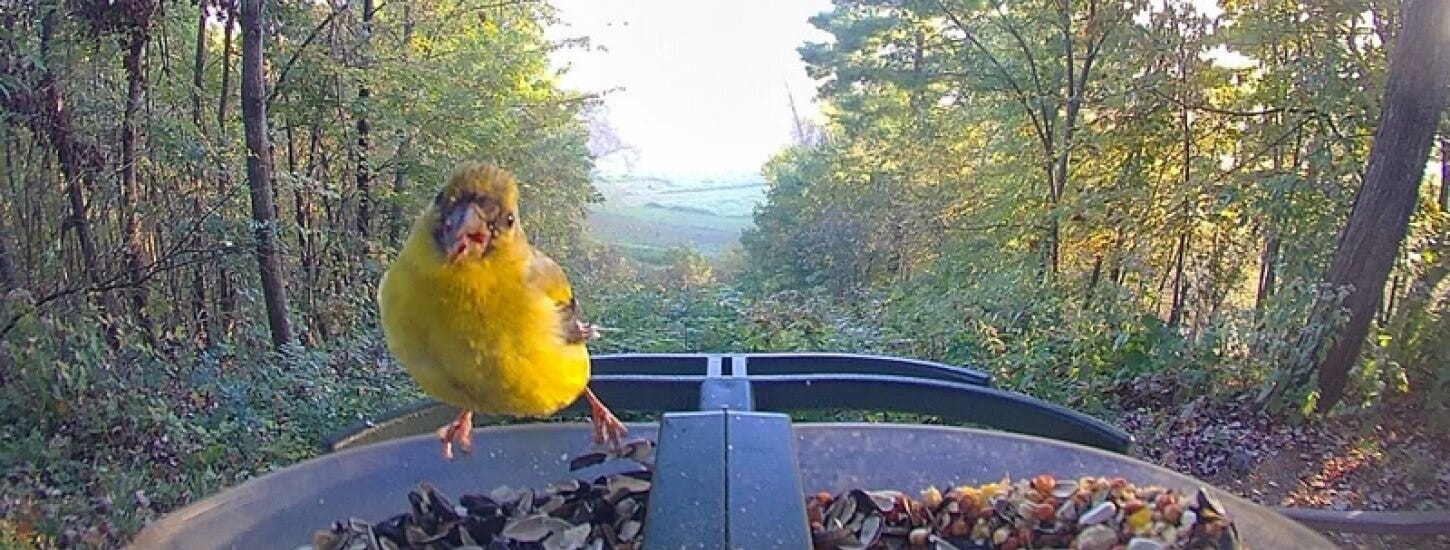

Each spring and fall, the skies over North America come alive with one of nature's most spectacular phenomena: bird migrations. Each year, billions of birds take flight on incredible journeys, traversing what can be vast distances to get from wintering areas to breeding grounds and back. This annual event is not only a testament to the remarkable abilities of these feathered travelers but also an opportunity for bird enthusiasts to witness the diversity and beauty of avian life.
Bird Migration Basics
In North America, bird migration typically follows a north-south pattern. Birds fly south for the winter when food becomes scarce in colder months, then turn around and head back north in the spring when temperatures warm and resources like food, water, and shelter are easier to find. In North America, more than 350 bird species embark on this journey.
Migration patterns vary widely among species:
- Long-distance migrations: Epic journeys of up to thousands of miles. The blackpoll warbler flies more than 10,000 miles from Alaska to the Amazon, including a nearly 2,000-mile nonstop flight over the Atlantic.
- Medium-distance migrations: Journeys of several hundred miles.
- Short-distance migrations: Smaller movements, such as from the top of a mountain to the bottom.
North American Flyways
Birds in North America generally follow four main migratory routes, which are known as flyways:
- Atlantic Flyway: Along the East Coast
- Mississippi Flyway: Following the Mississippi, Missouri, and Ohio rivers
- Central Flyway: Through the Great Plains
- Pacific Flyway: Along the West Coast
It’s important to note that these are not fixed routes like highways, but are instead broad, general routes that birds tend to follow. They may take advantage of geographic features like coastlines, rivers, and mountain ranges to navigate efficiently.
Fascinating Facts About Bird Migrations
- The American golden plover flies up to 20,000 miles annually between breeding grounds in the Arctic breeding grounds and wintering areas in South America.
- Birds like the Rufous Hummingbird use the Pacific Flyway to travel 3,000 miles between Mexico and British Columbia.
- Hundreds of thousands of sandhill cranes gather along Nebraska's Platte River each spring, creating one of North America's greatest natural spectacles.
- Many birds migrate at night, and some reach altitudes as high as 15,000 feet.
- In North America, peak spring migration occurs between the beginning of March and the middle of June, while fall migration generally runs from early August to late November.
- Some species, like the eared grebe, undertake "molt migrations," making long stops at specific lakes to shed and regrow their feathers.
- Northern bobwhites in the Smoky Mountains are altitudinal migrants, moving to lower elevations in winter for food and higher elevations in spring to breed.
Observing Migration with a FeatherSnap Smart Bird Cam Feeder
If you have a FeatherSnap Bird Feeder you will have a front-row seat to annual migrations. This innovative device combines a bird feeder with a high-resolution camera and AI technology to capture and identify visiting birds.
Using a FeatherSnap feeder, you might observe:
- Seasonal changes: As the migration progresses, different species will appear and disappear from your feeder. Some stay for a few days, others for longer.
- Behavioral patterns: The camera can capture interesting bird behaviors, such as birds jockeying for position on the feeder tray or midair landing acrobatics.
- Species identification: FeatherSnap’s AI identification tools can help you recognize birds stopping at your feeder.
- Migration timing: By reviewing the photo log, you can track when certain species arrive or depart, helping you to understand how weather impacts migrations.
- Interaction dynamics: By closely watching your feeder cam you can see how different species interact at the feeder, and even learn about hierarchies or competitive behaviors.
While these migrations are a marvel, keep in mind how tough it can be for these small birds. Climate change, habitat loss, and other factors make these journeys increasingly perilous. By learning about and appreciating bird migration, we can become more aware of the need to protect these birds and their habitats.